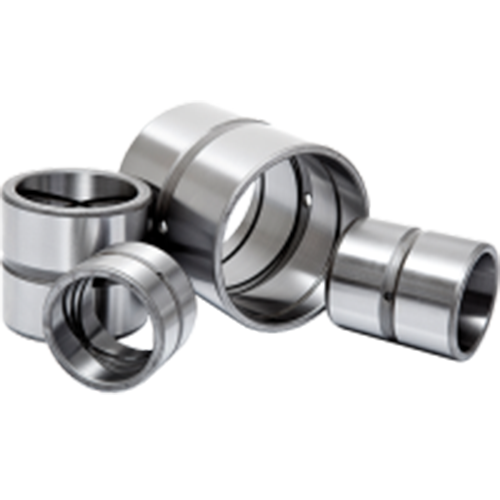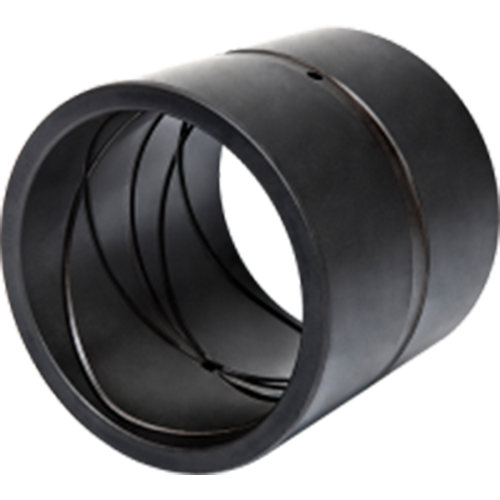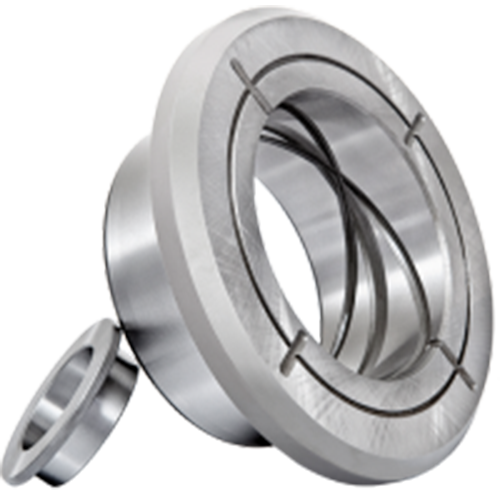In the vast landscape of mechanical components, hardened steel bushings may not always grab the spotlight, but they are undeniably crucial for the smooth and efficient functioning of countless machines and systems. These small yet mighty parts play a vital role in reducing friction, supporting loads, and guiding moving elements. So, what exactly are hardened steel bushings made of, and how do these materials contribute to their exceptional performance? Let’s dive in and explore.

The Base: Carbon Steel – The Starting Point
At the core of most hardened steel bushings lies carbon steel. Carbon steel is an alloy primarily composed of iron and carbon, with carbon being the key alloying element that gives the steel its unique properties. The amount of carbon in the steel can vary, typically ranging from 0.2% to 2.1% by weight, and this variation significantly impacts the steel’s characteristics.
Low – carbon steels, with carbon content below 0.3%, are relatively soft and ductile. They are easy to machine and form, making them suitable for applications where high strength is not the primary requirement. However, for hardened steel bushings, medium – and high – carbon steels are more commonly used. Medium – carbon steels, containing 0.3% to 0.6% carbon, offer a good balance between strength and ductility. High – carbon steels, with carbon content above 0.6%, are extremely hard and wear – resistant but can be brittle if not properly treated.
Carbon steel provides the basic framework for the bushing, giving it the necessary strength to withstand the mechanical forces it will encounter during operation. Its relatively low cost and wide availability also make it an economically viable choice for mass – producing bushings.

The Transformation: Heat Treatment – Unleashing the Potential
While carbon steel forms the foundation, it’s the heat treatment process that truly transforms it into a hardened steel bushing with superior properties. Heat treatment involves a series of carefully controlled heating, holding, and cooling operations that alter the microstructure of the steel, resulting in increased hardness, wear resistance, and fatigue strength.
Quenching: The Rapid Cooling Stage
The first step in heat treatment is quenching. The carbon steel bushing is heated to a specific temperature, known as the austenitizing temperature, which is typically above the upper critical temperature of the steel. At this temperature, the steel transforms into a single – phase austenitic structure, which is soft and ductile.
Once the bushing reaches the austenitizing temperature, it is rapidly cooled, usually by immersing it in a quenching medium such as oil, water, or brine. The rapid cooling causes the austenite to transform into a hard, brittle phase called martensite. Martensite has a highly distorted crystal structure that gives the steel its high hardness and wear resistance. However, the extreme hardness of martensite also makes the steel brittle, so further treatment is necessary to improve its toughness.

Tempering: Balancing Hardness and Toughness
To reduce the brittleness of the quenched steel while maintaining a desirable level of hardness, a tempering process is carried out. Tempering involves reheating the quenched bushing to a temperature below the austenitizing temperature, typically between 150°C and 650°C, and holding it at that temperature for a specific period.
During tempering, some of the internal stresses in the martensite are relieved, and the crystal structure begins to change. This results in a reduction in hardness but a significant increase in toughness and ductility. The tempering temperature and time are carefully selected based on the desired properties of the final bushing. A higher tempering temperature will result in a softer but tougher bushing, while a lower tempering temperature will produce a harder but more brittle one.
The Enhancement: Alloying Elements – Taking Performance to the Next Level
In addition to carbon and the heat treatment process, alloying elements are often added to carbon steel to further enhance the properties of hardened steel bushings. These alloying elements can improve various aspects of the steel, such as corrosion resistance, high – temperature strength, and wear resistance.

Chromium (Cr): The Corrosion Fighter
Chromium is a widely used alloying element in hardened steel bushings, especially those that will be exposed to corrosive environments. When chromium is added to steel in sufficient amounts (usually above 10.5%), it forms a thin, passive oxide layer on the surface of the steel, known as chromium oxide. This oxide layer acts as a protective barrier, preventing further corrosion and giving the steel excellent corrosion resistance. Chromium also contributes to the formation of hard carbides, which increase the wear resistance of the steel.
Molybdenum (Mo): The High – Temperature Hero
Molybdenum is another important alloying element that enhances the high – temperature strength and creep resistance of hardened steel bushings. It forms stable carbides and intermetallic compounds that prevent grain growth and softening at elevated temperatures. This makes molybdenum – containing steels suitable for applications where the bushings will be subjected to high temperatures, such as in automotive engines and industrial furnaces.
Nickel (Ni): The Toughness Booster
Nickel is added to steel to improve its toughness and ductility, especially at low temperatures. It helps to stabilize the austenitic phase of steel, which gives the material better impact resistance and reduces the risk of brittle fracture. Nickel also enhances the corrosion resistance of steel, particularly in acidic environments.
Vanadium (V): The Wear Warrior
Vanadium is known for its ability to form hard, stable carbides that significantly increase the wear resistance of steel. These carbides act as tiny reinforcing particles within the steel matrix, preventing wear and abrasion. Vanadium also refines the grain size of the steel, improving its mechanical properties and machinability.
Hardened steel bushings are a remarkable combination of materials science and engineering precision. Starting with carbon steel as the base, they undergo a transformative heat treatment process that gives them their characteristic hardness and strength. The addition of alloying elements further tailors their properties to meet the demands of specific applications, whether it’s resisting corrosion, withstanding high temperatures, or enduring heavy loads.




